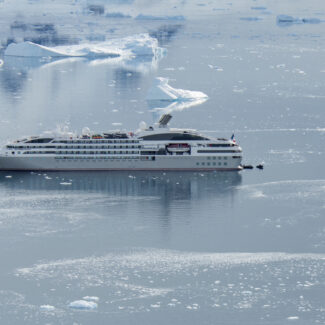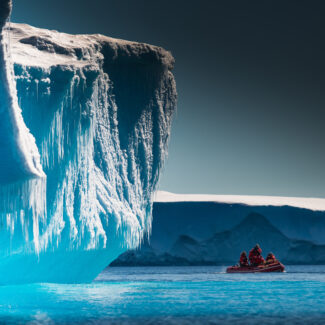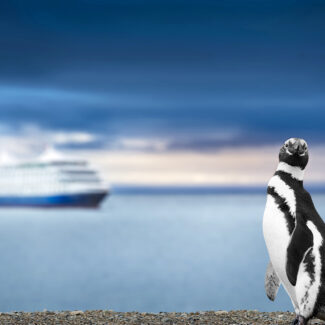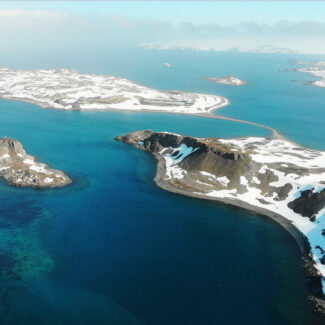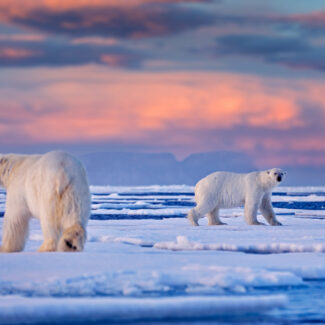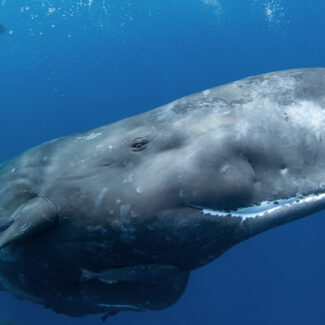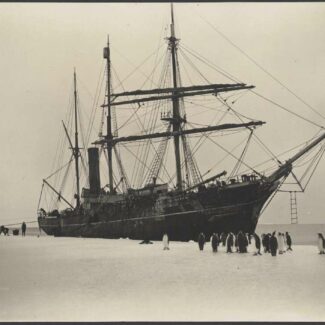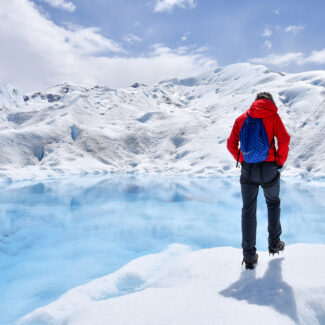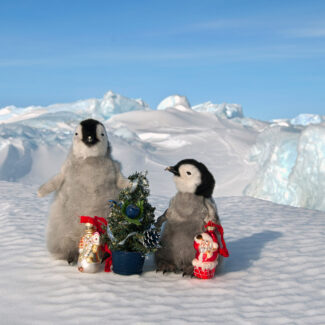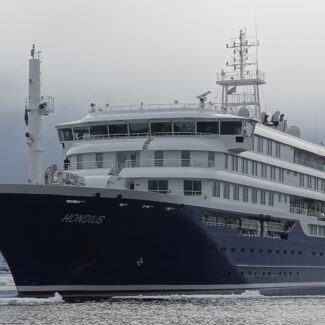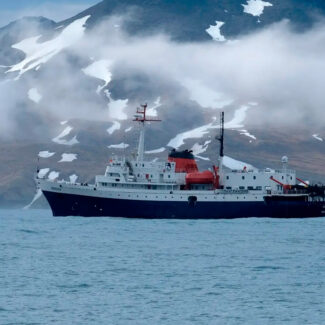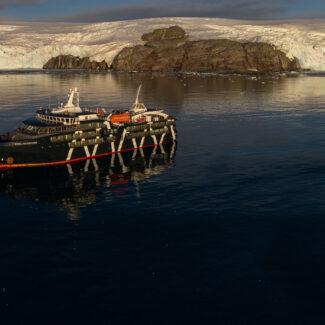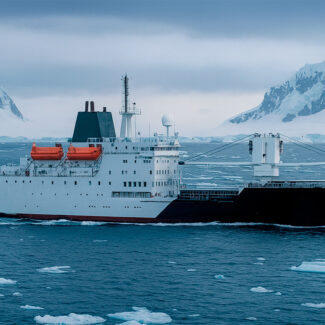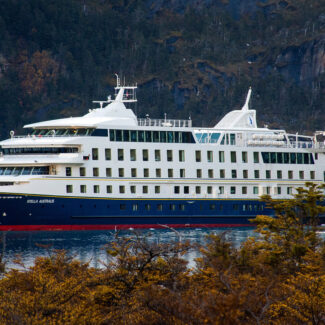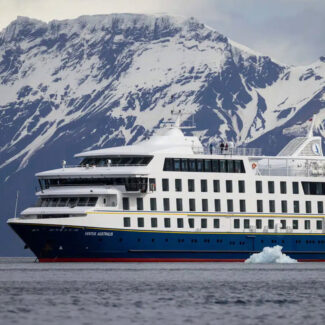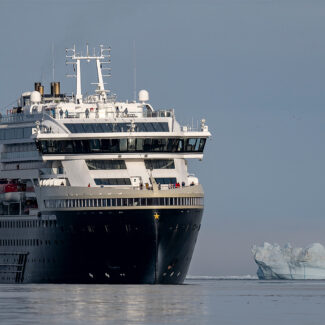10 Fascinating Polar Bear Facts
- 1. Polar Bears are True Marine Mammals
- 2. Polar Bears Paddle With Their Front Paws Only
- 3. They’re the Most Carnivorous of All Bears
- 4. Polar Bears Are (on Average) the Heftiest Terrestrial Carnivores on the Planet
- 5. Polar Bears Have Black Skin
- 6. There Are 20 Defined Subpopulations of Polar Bear (and Five “Polar Bear Range States”)
- 7. Polar Bears Could Theoretically Survive—and Thrive—in Antarctica
- 8. Polar Bears Evolved Only Recently From Brown Bears—and Can Still Hybridize With Them
- 9. Only Pregnant Female Polar Bears Typically Den in the Winter
- 10. Polar Bears Face a Precarious Future
Likely no creature is so emblematic of the Arctic realm as the polar bear: the spectacular “ice bear” that reigns supreme atop the food web—and sits atop the size chart of all land-based carnivores. Read on for ten fascinating facts about polar bears!
Did you know these magnificent creatures are so adapted to the water that they’re classified as marine mammals? This incredible shot captures a polar bear effortlessly navigating its ocean home!
1. Polar Bears are True Marine Mammals
When one thinks about marine mammals, it is understandable that cetaceans and pinnipeds (whales and seals) spring foremost to mind. But as the English translation of their Latin name suggests—Ursus maritimus, the “sea bear”—polar bears, too, are genuine marine mammals, given they rely upon the ocean environment for the vast bulk of their subsistence and survival.
After all, it is other marine mammals—particularly ringed seals as well as, to a somewhat lesser extent, bearded seals—that compose the majority of their diet, and they spend most of their time out on the sea ice, only coming ashore for denning (though female bears in some places will den out on thick, snow-covered pack ice) and when seasonal sea-ice retreat forces bears in certain areas to wile away weeks or months on terra firma.
Adaptations for on-the-ice and offshore living include the broad, paddle-like, dinner-plate-sized paws with their dense fur, bumpy pads, and sharply curved claws—all good for traction—and a more streamlined bodyform than your “average” bear.
2. Polar Bears Paddle With Their Front Paws Only
Of four-legged mammals, surprisingly polar bears are the only ones that characteristically propel themselves in the water using only their forelegs. Those big, broad front paws of theirs act as effective paddles, while the rear legs merely act as rudders, helping the swimming bear steer.
While this polar bear is mid-leap, imagine it gracefully swimming using only its powerful front paws as paddles, while its hind legs act as rudders – a truly unique aquatic adaptation!
3. They’re the Most Carnivorous of All Bears
By a fair measure, polar bears rely more heavily on meat than any other bear species: not particularly a surprise, given the High Arctic doesn’t exactly serve up ready-to-hand plant material on a year-round basis. Trophically speaking, polar bears are “hypercarnivores,” consuming only small amounts of vegetation (as well as kelp and seaweed); all other bears are best described as omnivores.
As we’ve already mentioned, bearded and (especially) ringed seals are linchpin ice-bear food, but a variety of other seal species, including harp and harbor seals, land on the menu. The seals polar bears most favor as prey are nice and fatty, a caloric bundle that helps the ursid endure the lean periods of shorebound fasting many populations—especially those in the Seasonal Ice Ecoregion of Arctic Canada and western Greenland, but increasingly other corners of polar-bear range—endure when sea ice is at its minimum extent.
Bigger marine mammals are also sometimes taken, including walrus (mainly as pups) as well as such polar cetaceans as beluga whales and narwhals; polar bears also happily scavenge carcasses of baleen whales.
While most of the red meat a polar bear takes in comes in the form of blubbery marine prey and carcasses, it will sometimes target meat-on-the-hoof: namely reindeer/caribou and the odd muskox.
This powerful predator lives up to its reputation! As the most carnivorous bear species, polar bears rely almost exclusively on seals for sustenance in their icy Arctic home.
4. Polar Bears Are (on Average) the Heftiest Terrestrial Carnivores on the Planet
Only the brown bear rivals the polar bear in size when it comes to terrestrial carnivores, and polar bears generally average that much heftier—a reflection, at least in part, of their super-energy-rich hypercarnivorous diets. From the helpless pipsqueaks they’re born as, polar bears pack on the bulk in short order, with males averaging as much as 800 kilograms (1,763 pounds); the biggest on record have exceeded a ton (907 kilograms).
Polar bears are the most sexually dimorphic (that is, the most physically different between the sexes) of all bears, with females typically clocking in at about half the size of males. (Which, needless to say, still shakes out to a very big bear.)
5. Polar Bears Have Black Skin
A polar bear looks white as can be, but in fact the skin underneath that pearly coat of hollow and transparent fur is black. Such a hue translates to a very low albedo (a measure of reflectivity): that is, it significantly absorbs incoming shortwave solar radiation. And that, in turn, shakes out to a warmer bear, one that takes advantage of even low-angle sunlight to stay warm.
6. There Are 20 Defined Subpopulations of Polar Bear (and Five “Polar Bear Range States”)
It’s easy to imagine one single population of polar bears up around the top of the world, all roaming about and mingling together. Actually, scientists define some 20 fairly distinct and discrete subpopulations of the species, from the Baffin Bay, Davis Strait, and Chukchi Sea to the Kara Sea, Lancaster Sound, and Southeast Greenland stocks.
Collectively, these polar-bear subpopulations cover some 23 million square kilometers (about 9 million square miles), and, according to a 2015 estimate by the IUCN Polar Bear Specialist Group, account for perhaps 22,000 to 31,000 individuals.
The countries within which polar bears are found—and which are signatories to the 1973 Agreement on the Conservation of Polar Bears—are the so-called Polar Bear Range States: Canada, Greenland, Norway, Russia, and the United States. Canada alone lays claim to anywhere from one-half to two-thirds of all the world’s polar bears.
From the sturdy grip of these specialized paws, adapted for traversing icy terrains across the Arctic’s diverse subpopulations, to the international efforts of the five “Polar Bear Range States,” conservation is key to securing their future.
7. Polar Bears Could Theoretically Survive—and Thrive—in Antarctica
As any kindergartener could likely tell you, polar bears are found exclusively in the Arctic, not Antarctica. But while they have evolved geographically in the Northern Hemisphere, it’s fascinating to consider what might happen were polar bears introduced to Antarctica. The consensus is that they would likely survive and even thrive given the abundance of seals and penguins—prey they don’t encounter in their natural range—which would provide ample food. After all, polar bears are highly adaptable predators, and their skills would likely translate well to the Antarctic environment.
Despite their potential success, it is important to note that the notion of introducing polar bears to Antarctica is a highly controversial one. Any sudden addition of a large terrestrial predator would drastically disrupt an existing ecosystem, especially one as delicate as the Antarctic which has evolved for millions of years without such a presence. Lacking the defenses that their Arctic counterparts have developed, the native Antarctic wildlife would be ill-equipped against such an apex predator and the ecological consequences would be unpredictable and potentially devastating.
8. Polar Bears Evolved Only Recently From Brown Bears—and Can Still Hybridize With Them
In the big scheme of things, polar bears are only a recently evolved species. Scientists reckon they diverged from brown bears during the Pleistocene, perhaps 500,000 years ago, although much inquiry into their evolutionary record continues. (Prehistoric polar-bear remains are scarce; the only ancient skull yet found is an 100,000-year-old one from Alaska’s Beaufort Sea, and meanwhile a Late Pleistocene Thames River fossil that some researchers have attributed to an extinct polar-bear subspecies, Ursus maritimus tyrannus—the so-called Pleistocene or tyrant polar bear—may actually be from a brown bear.)
Presumably Arctic brown bears—perhaps along the Siberian or Alaskan coasts—began foraging more frequently along the seashore, scavenging whale carcasses and the like, and perhaps trying their hand at hunting pinnipeds. Lighter-furred brown bears would have likely been more successful at such predation, given the better camouflage against snow and ice; natural selection would have thereby encouraged the development of a white coat, plus the shorter, more curved claws and shearing teeth that distinguish the modern-day, hypercarnivorous polar bear from the omnivorous brown bear.
Genetic evidence suggests these close ursid cousins have pooled their genes multiple times since during warmer interglacial periods when the temperate/boreal brown bear and Arctic polar bear crossed paths, as far back as about 125,000 years and at least four times between 15,000 and 25,000 years ago. Gene flow in these events was from polar bears to brown bears; in fact, the 125,000-years-ago admixture means upwards of 10 percent of the current brown-bear genome apparently derives from polar bears.
We appear to be living at another time of polar bear/brown bear hybridization, at least at the small scale, as the warming temperatures associated with climate change draw brown bears poleward, and polar bears increasingly using dry land as sea ice diminishes. Some eight such hybrids—sometimes called “pizzly” or “grolar” bears, portmanteaus of polar bear and grizzly bear (the grizzly being the primary North American subspecies of brown bear)—have been documented in the North American Arctic since 2006. Evidence suggests barren-ground grizzlies, the tundra-roaming North American ecotype of the grizzly, are now venturing farther northward, even out onto the sea ice, where they’ve been noted hunting seals in very polar-bear fashion—and even killing polar-bear cubs. (Although polar bears out-size barren-ground grizzlies, the latter’s greater aggressiveness and swagger seem to give them an edge in confrontations.)
9. Only Pregnant Female Polar Bears Typically Den in the Winter
Contrasting with most populations of brown bears as well as American and Asiatic black bears, polar bears don’t uniformly spend the winter in dens: Only pregnant females (sows) usually do so. This reflects the fact that northern bears in general don’t den in the winter to get away from cold: Rather, it’s a response—for omnivorous bear species, anyhow—to the diminished availability of preferred foods, such as plant matter and insects, during that season. Hypercarnivorous polar bears, though, don’t experience such a seasonal food shortage. But given how helpless newborn polar-bear cubs are—tiny, only thinly furred, and lacking subcutaneous fat—pregnant sows take to cozy dens in snowbanks, where they give birth between November and early January.
Sows and cubs emerge from those winter dens—depending on latitude and other location factors—anytime from February and April. At that point, the female bears have not eaten since denning, and sometimes before that; they may fast for as long as eight months between late summer and late winter/early spring.
10. Polar Bears Face a Precarious Future
The polar bear has become a symbol of climate change, and for good reason. The species’s entire lifeway is based around rhythms of Arctic sea ice, which is a declining commodity: diminishing in extent and in duration.
Polar bears are adapted to seasonally fast in late summer and early fall, when bears in many areas—especially in the Seasonal Ice Ecoregion—have to wile away time ashore, waiting for sea ice to expand again and thereby restore their hunting grounds. As mentioned, mother polar bears in particular often endure a long period of fasting, even as they expend a great deal of energy gestating, birthing, and nursing cubs. Any prolongation of the ice-free period could have big-time negative consequences for polar bears, and, indeed, reduction in physical condition, reproduction, survival, and numbers has already been seen in some subpopulations in concert with sea-ice diminishment.
It’s unlikely that polar bears can adapt to the rapidly changing climate by shifting to land-based foods, because those don’t generally meet the energy-rich demands of the bear’s diet; the ice bear has evolved to subsist mainly on high-fat nourishment such as seal blubber.
While the groundbreaking Agreement on the Conservation of Polar Bears of 1973 was motivated primarily by concern about overhunting, by far the main danger polar bears face today is our warming climate. The Polar Bear Range States acknowledged as much in the 10-year Circumpolar Action Plan adopted in 2015. Multilateral cooperation continues to be essential if the polar bear—already enduring the effects of human-caused warming—is to survive as a viable species into the future.
The gift of seeing a polar bear is one not to be taken for granted, especially given the uncertain existential future the species is staring down. There’s nothing like clapping eyes on the magnificent ice bear in its natural habitat, which you have the chance to do on one of our Arctic cruises!
This poignant image captures the isolation faced by polar bears as their icy habitat diminishes. Understanding their challenges is the first step towards securing a future for these magnificent Arctic inhabitants.
Disclaimer
Our travel guides are for informational purposes only. While we aim to provide accurate and up-to-date information, Antarctica Cruises makes no representations as to the accuracy or completeness of any information in our guides or found by following any link on this site.
Antarctica Cruises cannot and will not accept responsibility for any omissions or inaccuracies, or for any consequences arising therefrom, including any losses, injuries, or damages resulting from the display or use of this information.


